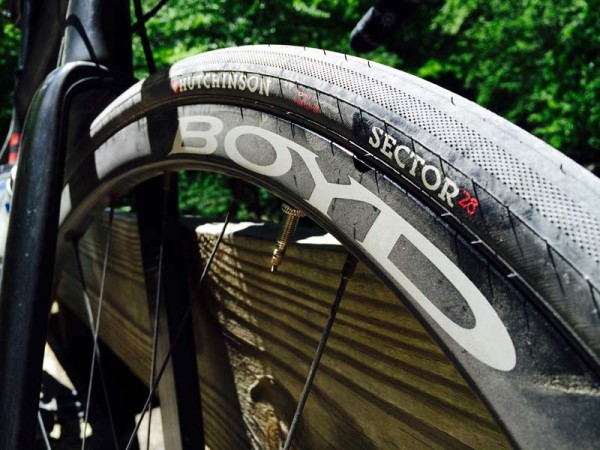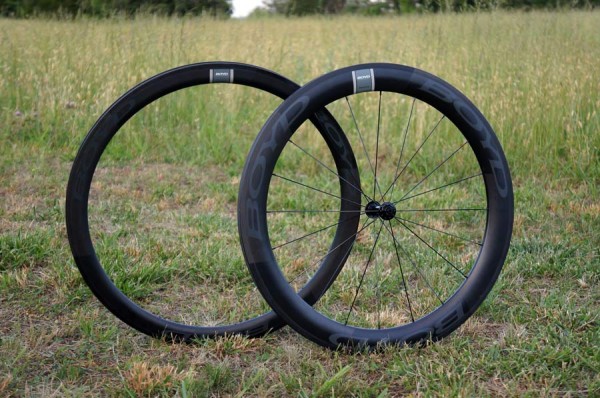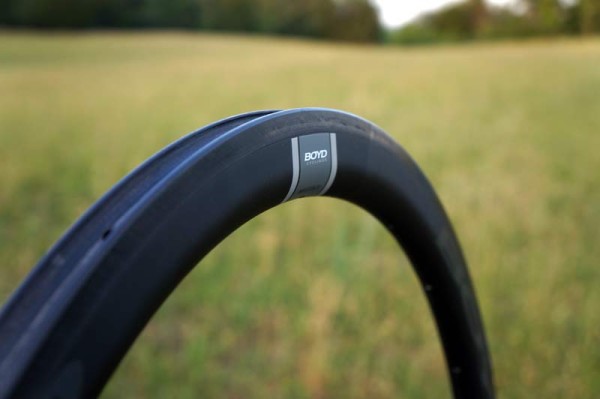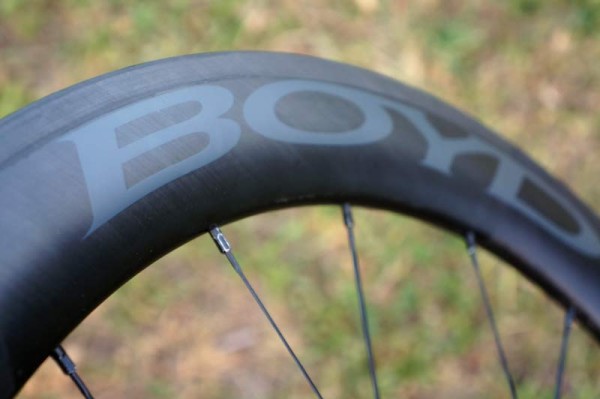This week, Boyd Cycling’s carbon-rimmed road bike wheels get a running change with new rims, sleeker decal options and lighter, upgraded rear hubs.
Shown above in 44mm and 60mm depths, the rims switch from having a 3K woven surface layer to full UD carbon fiber construction. They switched manufacturers for a larger company that can keep up with growing demand, which meant forming new molds. The shape, width and heights are all the same, but the move gave them an opportunity to tweak the layup. The result is a carbon clincher rim that’s about 40g lighter. The move to all unidirectional fibers was responsible for about 15g of those savings, the rest came from changes to the layup. The 44mm clincher should come in at 460g and the 60mm at 520g. Changes to the tubular’s layup ate the weight savings, so its scale reading remains unchanged.
Both are also available in an 90mm depth, which Boyd says garnered a negative drag between 10° and 20° yaw angles in the wind tunnel.
Complementing the smooth new UD finish are new graphics options. You can order them with or without the gray “BOYD” logos all around like you see in the top pic. Either way, they’ll keep the “flag” stripe at the valve hole.
All sizes and versions will be available this week. They’ll be $1,300 to $1,500 per set depending on type and depth.
Disc brake versions will be available by cyclocross season. Boyd says the clinchers can be set up tubeless with rim tape and sealant.
They’re being built on new rear hubs that have a revised preload system, quicker engagement with 32 drive ring teeth (versus 24 on prior hubs), and a new hub shell that sheds 40g. The cap on the left (non-drive side) threads on to preload the bearings, then a small bolt (not visible on this pic) clamps it down at the proper adjustment point and prevents loosening. Front hub stays the same.

While Boyd’s carbon wheels are a steal, he offers a range of alloy wheels for those on a really tight budget. The latest are the Altamont Disc, which should also be popping up on his website any day now. Based on the standard rim brake version, these use the same rims but without a machined brake track. Width is 24mm/18.5mm internal with a 30mm deep flat-to-rounded aero shape.
While the standard rim brake wheels get three spoke lacing options based on rider weight, the disc models will only come as two-cross, 24 front/28 rear. Weight should be around 1650g.
Retail is $670, same as the rim brake models.
I rode these through 80 miles of hilly Virginia back roads and gravel paths (easily 50% or more off the pavement) this weekend and they held up admirably. The rim isn’t tubeless ready per se, but Boyd’s crew set mine up tubeless with Stan’s tape and sealant and Hutchinson Secteur 28c tires. Those turned out to be darn near perfect for the mix of on- and off pavé adventures the Baller’s Ride is known for. The wheels rolled fast and smooth, handled the corners very well and kept the tires firmly planted and aired up.
At just 30mm deep, cross winds weren’t an issue, yet they sliced through the air quite well. Respect for my own life and limb kept me under 45mph on the descents, and they were perfectly stable all the way to that point. On the gravel descents, we hit up to 24mph (steady at 19mph for extended periods), and they were stiff enough to track precisely around turns and avoiding obstacles on firm to loose to what-the-hell-am-I-doing-riding-this-so-fast conditions. All in all, a very impressive wheelset that’d make a solid choice for cyclocross, too.









